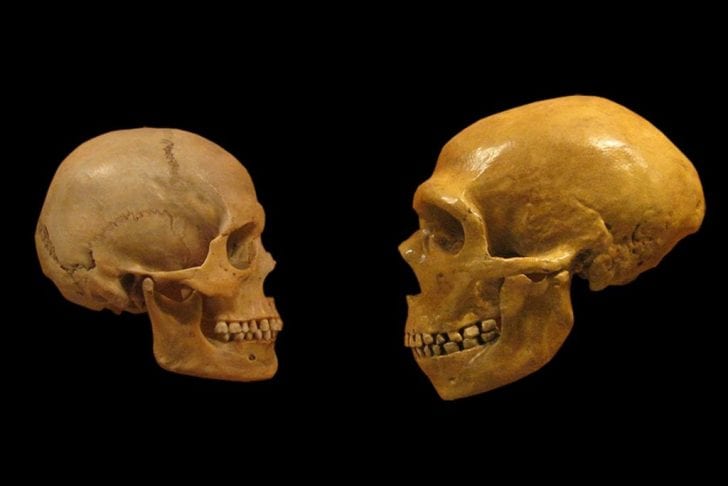Neanderthals, the closest relative of our species Homo Sapiens, have always been depicted in films and documentaries as these muscular, slouching brutes that’s recognizable for their low brows and stooped posture.
We have this preconceived notion, probably because of the contents offered to us, that they were dumb and barbaric and that they are inferior to modern humans. However, several studies would tell us that we know little to nothing about them after all.
Homo Neanderthals
Before we learn about the misconceptions about the species, let’s first discuss their discovery.
It was in 1856 when bones were found in a limestone quarry in Germany, which experts then thought to be of a deformed modern human being.
Bones were thick and it had an oval skull, and succeeding studies declared that it was from an unknown species prior to us.
By 1864 it was called Homo Neanderthalensis, named after the place it was dug up, the Neander Valley.

It was believed that Neanderthals co-habited alongside our species in Europe before suddenly disappearing some 30,000 years ago, one of the greatest mysteries in the field of evolution.
Although they lived together, Neanderthals looked far different than us with characteristics that were deemed to be useful in the climes during Ice Age.
Caring for the Sick
It was in the 1950s when archaeologists and scientists learned that not everything we thought about Neanderthals was true.
A discovery in 1908 at La Chapelle-aux-Saints, France of an elderly man with no teeth and was believed to have suffered from arthritis proved that his family may have catered to the patient’s needs till he got old and eventually died.
Researchers of a 2018 study believe that the Neanderthals didn’t think of what they will receive in turn for their caring efforts but that they just responded on how they felt upon seeing their peers in pain.
They looked at the case of a man who had spine and shoulder degenerative diseases but remained intact with the group he was with, which the authors said was because of community support.
Showcasing Art

Far from our perception that Neanderthals were barbaric, studies show that they actually made the earliest forms of art in caves.
Researchers found that there are paintings in three caves in Spain that were said to be made about 64,800 years ago, or 20 millennia before the early Homo sapiens, who were thought to be the creators of the artworks, even arrived.
How did the researchers come up with this conclusion? It was through a technique called uranium-thorium dating, which is more accurate than traditional processes.
A+ Hunting Skills

Neanderthals were known to be hunters and not gatherers, but what’s impressive is how they had the knowledge in skillfully chasing their food.
Expert Gerrit Dusseldorp noted that the species is capable of hunting down even the most difficult animals to catch.
The Netherlands Organization for Scientific Research echoed the same sentiment and added that a technique that they had to have also was tied with good communication and coordination skills.
Apart from their capacity to catch their food, they also have enviable strength, as the Smithsonian Institution noted. Their bones had fractures the same as that of rodeo riders, who usually engage with big animals.




